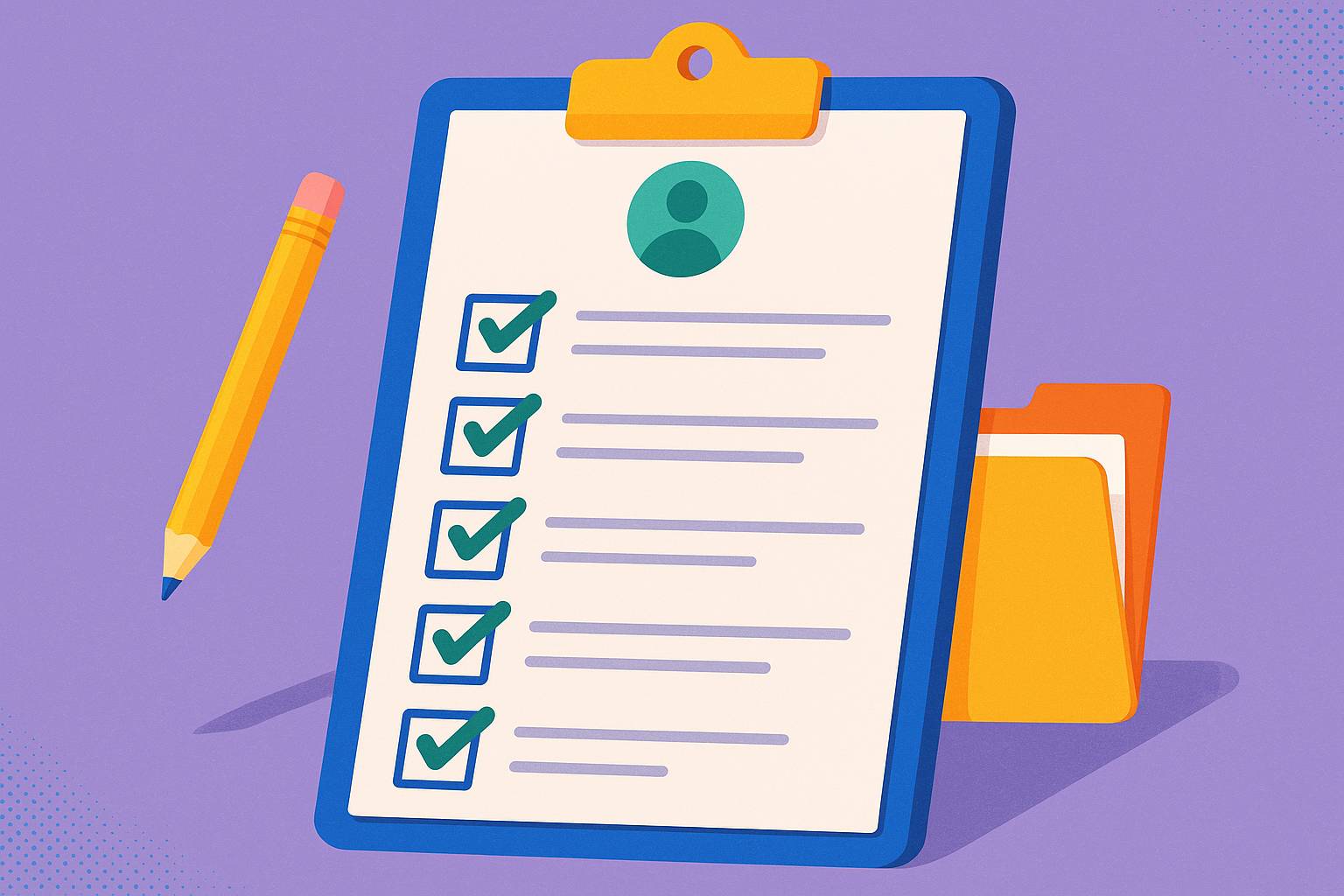Most Orientation Checklists Are Just… Lists. That’s why, Only 12% of employees say their organization does a good job onboarding them. (Source)
Not training. Not retention. Just the very first few days.
That number isn’t just low. It’s a red flag for every HR leader who believes a checklist alone can carry the weight of employee trust, clarity, and culture.
Here’s the truth: orientation isn’t a document. It’s a design system.
Done right, it builds belonging before benefits are even discussed.
Done poorly, it triggers doubt before day two.
Let’s not talk about the generic first day to do list. But, a complete orientation system, which covers:
- What to do before they even walk in
- What to deliver on day one without overloading
- What to embed across the first week so the handoff to onboarding is seamless
You’ll get actionable checklists, enterprise scale formats, and practical advice that works across remote, hybrid, and in office contexts.
But first, let’s stop confusing orientation with onboarding. It’s costing your team more than you think.
What New Employee Orientation Really Is and Isn’t
Orientation ≠ Onboarding. Stop Blending Them.
Most teams think orientation is a lighter word for onboarding. It’s not.
Orientation is the initial experience. It’s what happens from the moment a candidate says yes until they feel like they belong. Usually, that spans day 0 to day 5. Onboarding is everything that happens after, learning the role, building momentum, meeting milestones.
Here’s a simple way to separate them:
| Orientation | Onboarding |
|---|---|
| First 1–5 days | First 30–90 days |
| Clarity, connection, compliance | Competence, contribution, confidence |
| What the company is and how to navigate it | How to do the job well and improve |
| Owned by HR + Manager | Owned primarily by Manager + Enablement |
Without a clear orientation phase, onboarding becomes reactive. New hires end up asking the same basic questions, missing key policies, or waiting on access and role clarity.
Worse, they form silent assumptions about how the company works and most of those are wrong.
Why Orientation Often Fails?
Most failures aren’t dramatic. They’re subtle:
- The first day call gets delayed
- The handbook is sent but never explained
- The hiring manager cancels their 1:1
- The new hire still doesn’t know who their buddy is
And suddenly, a highly capable employee begins doubting their decision. Not because of the job but because no one showed them how to start. A checklist can prevent that. But only if it’s part of a well planned system.
MUST READ: The ROI of Interactive Training Content for HR
Before Day One: The Preboarding Checklist
Orientation doesn’t begin on day one. It begins the second your offer is accepted.
That period between “we’d love to have you” and “here’s your desk” is a blind spot for most HR teams. But it’s also the easiest place to win trust early, reduce first day anxiety, and save tens of minutes per new hire on repetitive admin.
Here’s exactly what needs to be in place before the employee ever logs in:
HR’s Preboarding Checklist
- Send a real welcome email, not a transactional one. Include a note from the team, what to expect, and how to prep for day one.
- Digitally complete all legal paperwork: tax forms, contracts, NDAs, compliance policies. Tools like DocuSign or HelloSign save hours.
- Share a first day schedule in advance: let them know when to join, what tools they’ll need, and what sessions are lined up.
- Attach the employee handbook in a format they’ll actually read. Better: convert it into a short, searchable explainer inside an interactive doc.
- Assign a buddy and inform both people. This isn’t a suggestion. It’s one of the biggest levers for emotional onboarding.
IT and Ops Checklist
- Set up device access: provision laptop, mobile, and accessories. If they’re remote, confirm shipping date and receipt before day one.
- Precreate logins for HR systems, Slack, email, Google Workspace, and any role specific tools.
- Doublecheck permissions: access to the wrong folders or drives can expose data and frustrate your new hire in the same click.
Hiring Manager’s Checklist
- Draft a 30-60-90 day plan: doesn’t need to be fancy. Just enough to give day one context beyond “read this doc”.
- Book the week one 1:1s now: not just with you, but with 2-3 cross functional teammates they’ll collaborate with.
- Prep a first task that isn’t fluff. Give them something real and scoped they can contribute to by the end of the first week.
Preboarding isn’t busywork. It’s your chance to show your systems work, your people are ready, and your company doesn’t leave things to chance.
Day One: The Orientation Experience
The first day isn’t about packing information. It’s about creating clarity, momentum, and belonging. Most companies either do too little (just a login and a handbook) or too much (a six hour Zoom that no one remembers).
The best HR teams design day one to answer a single question: “Do I know how to move forward here?”
That’s the real outcome. Not swag, not a dense slide deck.
Here’s how to structure the first day so it works, in person or remote.
9:00 AM: Welcome With Intent
Whether the new hire is walking into an office or joining from a kitchen counter, the first interaction matters.
- Greet them personally: Slack message from the manager, a video intro from the CEO, or a team hello in the channel
- Show them the day’s agenda right away so they’re not guessing what’s next
- For remote hires, give a brief tour of your stack, just 5 minutes explaining where work happens
This isn’t about impressing them. It’s about making them feel expected.
10:00 AM: Give the Big Picture
Instead of diving straight into compliance, zoom out. What do they need to understand about the company?
- Share your mission, not just the milestones
- Explain why the product exists, what problem it solves, and who it serves
- Walk through the company values, but only if you can connect them to actual behaviors
Make it conversational. If your team uses a Docustream powered culture explainer, this is where it fits.
Let them hear the story in the voice of the people who built it.
For example, at a 300-person SaaS company, each function built a 5-video orientation flow using Docustream. Now, they only spend 1 live hour per hire, instead of 4.
11:00 AM: Policy Without the PDF Dump
Nobody wants to be lectured on PTO or harassment policy for an hour. But every company needs to cover the essentials.
- Use an interactive format to walk through key HR policies
- Highlight only what’s relevant for day one: payroll setup, time off, code of conduct, IT security
- Leave the full doc for later, but make sure it’s accessible and searchable
The goal here isn’t compliance. It’s confidence. They should know where to look and who to ask.
12:00 PM: Team and Tools
After a short break, it’s time to make the new hire feel like part of the system.
- Introduce the immediate team live, async, or both. If remote, a 2 minute video intro from each team member works wonders
- Walk through core tools: Slack, email, HRIS, Notion, project tracker and how your team uses them
- Share the “how we work” guide. Meeting norms, doc culture, availability expectations
If they can’t navigate your tools by the end of the day, they’ll spend the rest of the week guessing.
2:00 PM: Manager 1:1
No employee should finish day one without a conversation with their manager.
In this 30 minute session:
- Review their 30 day plan and what success looks like
- Ask them how they learn best, what they need, what excites them
- Set expectations: communication style, daily rhythm, preferred feedback loops
This isn’t just for alignment. It’s the first moment where performance and relationship start to blend.
3:00 PM: A Real First Task (Optional)
If your systems are in place, you can hand them a scoped, simple task that contributes to a live workflow.
- Could be a small bug fix, a QA pass, a copy review, or even just a teammate shadow
- The idea is not to test, but to engage. New hires want to contribute quickly
Avoid vanity tasks. Give something that earns trust.
4:30 PM: Debrief and Open Q&A
End the day with a light, open ended session, ideally not just with HR, but with the buddy or a teammate.
- Ask: “What felt clear?”, “What felt confusing?”
- Share what’s happening on day two and week one
- Reaffirm they’re not expected to retain everything, they just need to know where to find it
This closing loop matters more than you think. It builds feedback into your culture from hour one.
Orientation doesn’t need to be theatrical. But it does need to be intentional.
Don’t miss: Why Employees Don’t Read Your HR Documents (And What Interactive Content Solves)
Week One: Embedding, Not Just Informing
By the end of day one, a new hire should feel welcome. By the end of week one, they should feel useful. That shift only happens if orientation evolves from explanation to participation. And this is where most HR checklists fall flat. They stop at introductions and policies, leaving managers to “take it from here” without structure.
Here’s how to turn week one into a real onboarding runway with clarity, consistency, and contribution built in:
Day Two to Day Five: The Weekly Checklist
Manager’s Role
- Schedule a daily 15 minute check in: not status updates, just pulse checks. “Anything unclear?” “What’s feeling confusing?” It signals availability.
- Introduce their real work, not theory: walk through a live project or client. Even if they’re not contributing yet, let them see how execution happens.
- Explain the unspoken norms: Slack etiquette, meeting behavior, feedback culture. These are harder to fix later.
Managers often assume “they’ll figure it out.”
But orientation without cultural context creates role confusion within days.
Team’s Role
- Assign shadowing opportunities: join two live calls or reviews. Let them observe what “great” looks like.
- Invite them to a group social or async fun prompt: doesn’t need to be a forced Zoom. A single “Tell us your go to productivity trick” Slack thread works.
- Show them real examples of work: past campaigns, deliverables, client feedback. Not theory. Actual output.
HR’s Role
- Send a simple end of week feedback form. One that takes under 2 minutes. Focus on emotional clarity: “Do you know who to ask when stuck?” “Do you feel part of the team?”
- Remind them of support channels: buddy, HR contact, tech help. Make it frictionless.
- Confirm completion of all compliance training: security, harassment, DEI. Track this. Audit later.
New Hire’s Momentum Markers
- They’ve said something in a meeting
- They’ve touched a real task or deliverable
- They’ve asked a question without hesitation
- They’ve formed at least one peer connection
If none of these have happened by Friday, the problem isn’t them. It’s your system.
Week one isn’t about performance. It’s about pace and belonging.
After Orientation: Extending Onboarding Beyond Week One
Orientation isn’t over when the calendar says “Week Two.” That’s just when the silence starts.
No more welcome emails. No first day adrenaline. Just real work, real tools, and real pressure.
Without a structured bridge into onboarding, most new hires hit a wall. They’re unsure what great looks like. Feedback disappears. Progress stalls.
That’s preventable.
Here’s how to transition from orientation to onboarding without letting clarity fade:
Build a 30-60-90 Plan That’s Actually Used
Don’t create a static slide deck labeled “onboarding goals.” Build a living doc that gets reviewed weekly.
- 30 Days: Focus on learning. Systems, teams, workflows. What are they absorbing? What are they shadowing?
- 60 Days: Focus on application. What tasks can they own end to end? Where are they contributing visibly?
- 90 Days: Focus on autonomy. Can they prioritize, navigate blockers, and solve problems without hand holding?
Link this to real manager 1:1s. If it’s not referenced weekly, it’s not working.
Keep the Feedback Loops Tight
Silence kills confidence. Especially early.
- Schedule a 15 minute pulse check at the start of each week for the first month
- Use simple, repeatable prompts: “What’s unclear?” “What are you avoiding?” “What’s one win last week?”
- Let them drive the second half of the 1:1. The point is coaching, not checking.
If they’re surprised by feedback at 90 days, something broke at 9.
Map Their First Win Publicly
Every new hire should have a clear “first success moment”, and it should be visible.
- Shipping a small feature
- Presenting a pitch deck
- Launching a mini campaign
- Writing a case summary
Choose something that matters, finishable within 30 days, and worth sharing in Slack or a team call.
Progress only builds if it’s seen.
Keep Orientation Content Searchable
Your policy docs, explainer videos, and tool guides should remain accessible long after day one.
- Use searchable tools like Docustream to make explainers available in real time
- Track what new hires revisit, skip, or replay, that’s your signal to improve the experience
- Add a smart Q&A layer so they don’t need to ping HR for every “how do I request a half day” moment
Orientation that’s forgotten is orientation that failed.
What Great HR Teams Do Differently
It’s not about having more people. It’s about having better systems. High performing HR teams aren’t just efficient. They create repeatable clarity at scale without burning cycles on the same questions, forms, and first week confusion.
Here’s what sets them apart:
They Personalize Orientation by Role and Context
Most companies copy paste the same checklist for every new hire.
Great teams don’t.
- Sales reps get product positioning and CRM training
- Engineers get codebase walkthroughs and deployment access
- Designers get brand guidelines and design system orientation
Even more advanced teams adapt content by region, language, or seniority. This isn’t complexity. It’s precision.
The fix: build modular content blocks that can be assembled into role specific flows. One core, many paths.
They Make It Easy to Self Serve, in Real Time
The most common orientation questions aren’t strategic. They’re practical.
- “How do I request time off?”
- “What’s our meeting culture?”
- “Where do I file expenses?”
If that information is buried inside 30 slide decks or PDFs, you’ve created friction where there should be flow.
Great HR teams use tools that make orientation searchable, skimmable, and spoken aloud. No gatekeepers. No delays.
It’s not about tech for its own sake. It’s about reducing repeated friction with reusable clarity.
They Track What Works and What Doesn’t
You can’t improve what you don’t measure. Yet most orientation programs have no idea:
- What content gets skipped
- Where new hires drop off
- Which explainers are actually used
Top HR operators build feedback loops inside the process. Not after it.
- A 1 question survey after each module
- A buddy debrief after week one
- A dashboard that tracks explainer usage or missed policies
The result isn’t just better documentation. It’s orientation that evolves with the org.
Sample Orientation Schedule: Remote vs In Office
One of the easiest ways to lose a new hire is by mismanaging time.
Most day one experiences aren’t underwhelming because they lack content. They fail because the timing is poorly planned.
A great orientation schedule creates momentum, not fatigue. It includes breaks, buffers, and blocks of interaction that feel human, and not like onboarding assembly lines.
Below is a model schedule designed for both remote and in office new hires. Use it to benchmark your own flow or as a modular template.
| Time | In Office Flow | Remote Flow |
|---|---|---|
| 9:00 AM | Welcome at reception. Desk tour. Team intro walk by. | Slack greeting. Zoom kickoff. Digital workspace intro. |
| 9:30 AM | Orientation overview with HR. | Orientation walkthrough via Docustream + live Q&A. |
| 10:00 AM | Company story with leadership. | Video from CEO + async mission explainer. |
| 10:45 AM | Coffee break with buddy. | Virtual coffee with buddy (calendar block + link). |
| 11:15 AM | Tools setup: email, HRIS, Slack, task manager. | Screen shared tool walkthrough + access check. |
| 12:00 PM | Lunch with team or buddy. | Optional “Lunch & Learn” with async intros. |
| 1:30 PM | HR policies and compliance walkthrough. | Interactive policy explainer + Docustream Q&A layer. |
| 2:30 PM | Meet with manager: role, expectations, goals. | 1:1 Zoom with manager. Share 30-60-90 plan. |
| 3:15 PM | Light team project shadow or observation session. | Join live team call or watch a past one async. |
| 4:00 PM | Day end debrief and Q&A. | Slack thread or live wrap up. Feedback form shared. |
Mistakes to Avoid in Both Flows:
- Back to back sessions with no breaks
- Making tool walkthroughs generic or too technical
- Delivering compliance material without interactive formats
- Skipping buddy time in the name of “efficiency”
- Ending the day without a live or async check in
The point of this schedule isn’t to fill time. It’s to create flow.
To ensure new hires aren’t left guessing what’s next, who they belong to, or why the company operates the way it does.
How to Turn Your Orientation Checklist Into a Self Running System
A checklist on a PDF is dead on arrival. No one tracks it. No one updates it. And no new hire wants to scroll through a 17 page document just to figure out how to log into payroll.
That’s where most orientation efforts fall short.
You don’t need more content. You need a repeatable system that works in real time, adapts to role and region, and runs without someone from HR having to explain it every time.
1. Convert Checklists Into Guided Explainables
Static docs get ignored. But if the same content is voice narrated, searchable, and skimmable in under five minutes, it gets consumed.
- Turn each part of your checklist into a short, AI narrated explainer
- Use visuals, embedded tool walkthroughs, and role specific logic
- Let new hires consume content on their schedule and not when someone is free to present it live
Example: instead of walking through the expense policy live each time, embed a 3 minute Docustream video that shows it, says it, and explains it in context.
2. Add Smart Q&A Layers
New hires don’t want to raise their hand every time something’s unclear.
But most orientation content doesn’t leave room for follow up.
- Let them type questions inside the orientation doc and get real time responses
- Add a quick search bar that surfaces common policies, answers, or videos
- Track what questions keep showing up and that’s your orientation friction
You’re not trying to answer everything. You’re trying to answer what actually slows them down.
3. Segment Delivery by Role, Not Just Date
Sending the same checklist to a designer and a backend engineer makes no operational sense.
The fix: segment your orientation system by:
- Role
- Department
- Geography
- Seniority
Then build logic to send the right explainers and resources at the right time. Docustream allows this kind of smart segmentation without building new content each time.
One source. Multiple flows. Zero duplication.
4. Track What’s Viewed, Ignored, and Revisited
If a section gets skipped by every new hire, fix it.
If a question gets asked ten times, answer it better.
The only way to improve orientation is to measure it like a product.
- View heatmaps to see where people drop off
- Track completion by content block, not just form signatures
- Test new formats and measure which reduce back and forth with HR
The difference between good onboarding and forgettable onboarding is feedback. Not just from people, but from content itself.
If you want new hires to remember their first week for the right reasons, don’t send a PDF. Send them clarity. Ownership. Progress. Build a system that works without you in the room and improves every time it’s used. No rebuild required. Just better delivery.
See how Docustream is helping some of the most efficient HR specialists, here.
FAQs: New Employee Orientation Checklist
1. What should be included in a new employee orientation checklist?
Include essentials across three phases: preboarding (contracts, access setup), day one (agenda, tools, HR policies, manager 1:1), and week one (shadowing, feedback, compliance, early contributions). The checklist should be role specific and trackable.
2. How long should employee orientation last?
Orientation typically spans the first 3 to 5 days. It should cover logistics, policies, team culture, and initial deliverables. Beyond day five, onboarding begins with training and performance goals.
3. What’s the difference between orientation and onboarding?
Orientation is short term (day 0 to 5), focused on clarity and connection. Onboarding is long term (up to 90 days), focused on skill building, contributions, and manager feedback loops. Both need distinct checklists.
4. How can I make orientation more engaging for remote employees?
Use voice narrated explainers, searchable policies, real time Q&A, and async team intros. Replace slide decks with bite sized, interactive formats that are easy to revisit and adapt by time zone.
5. Should different departments have different orientation checklists?
Yes. Engineers, marketers, and support reps have different tools, goals, and compliance needs. Use a modular system where core HR content stays consistent, and team specific layers adapt by role.
6. What’s the best format for delivering an orientation checklist?
Move away from static PDFs or text files. Use interactive documents, AI guided videos, or smart onboarding portals like Docustream. This enables real time search, usage tracking, and personalized delivery.
7. How do I measure the success of our orientation program?
Track completion rates, drop off points, questions asked, and first week sentiment. Review 30 day feedback and look for signals like early contributions, Slack engagement, and reduced repeat questions.
8. How do I reduce HR support tickets during onboarding?
Embed self serve clarity into orientation content. Answer common questions inside documents, use real time Q&A tools, and track which answers prevent repeat support. A single explainer can save tens of minutes per new hire.
tl;dr
Most HR orientation checklists are treated like a one day task. The best ones are designed like a product.
Here’s what separates the two:
- Preboarding is your first trust builder, not just admin prep
- Day one should create clarity and momentum, not overload
- Providing documents of 17+ pages won’t work, turn them into interactive videos
- Week one is for embedding, not observing
- Great teams personalize content by role, not job title
- Orientation systems that run in real time outperform static lists
- Feedback loops turn orientation into a compounding asset













